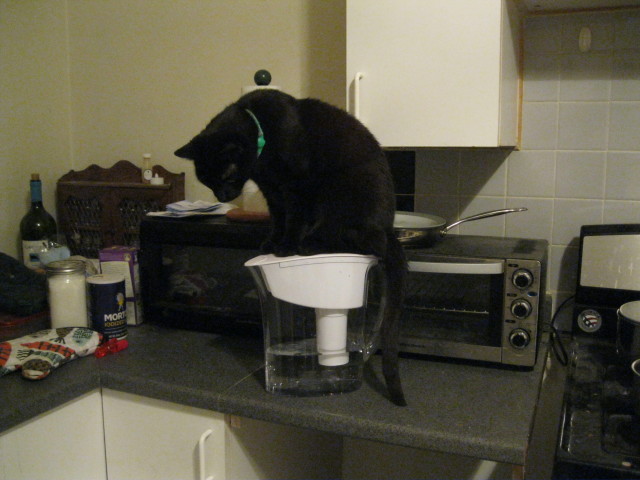
I wish the introductory essay to the edition I have recently acquired of In the Dark: Tales of Terror by E. Nesbit (1988/2017) was less chattily biographical and told me more about the context of the stories. The bibliography at the back tells me where all of them were published, which turns out to be a mix of collections and magazines, but what I can't get from either the book or the cursory internet is any sense of Nesbit's writing community. I know she had a political life. I'd love to know if she was talking to other horror writers or just reading them, if these stories are in dialogue with other stories or if they are just the inevitable flipside of writing so carefully for children: the darkness has to go somewhere. They are weird stories. I mean that both informally and technically. Some have ghosts, some have black magic, some have mad science, some have madness, some have premonitions, some have coincidences, some have cruel twists, some have happy endings; a little from column A, a little from column B. Some are straight-up shockers. Some are really eerie. I am nearing the end of the book and just finished "The Shadow" (1905), which opens with the strikingly modern disclaimer:
This is not an artistically rounded off ghost story, and nothing is explained in it, and there seems to be no reason why any of it should have happened. But that is no reason why it should not be told. You must have noticed that all the real ghost stories you have ever come close to, are like this in these respects—no explanation, no logical coherence. Here is the story.
It is possible for the reader to round off the story for themselves—it's almost impossible for the reader not to try—but even then it is the kind of Aickmanesque almost-pattern where nothing can be proven and it might be worse if it could. A number of the collected stories are in this vein, subtler and stranger than they first look. "The Haunted House" (1913) reads like a kind of miniature reverse Moreau, mediated by vampirism. "John Charrington's Wedding" (1891) has one of the nastiest narrators I have run into in some time and I can't tell if he's a factor in the terrible story he records, because if so he is as entirely unaware of it as he is of the impression he makes on the reader. "The Violet Car" (1910) is psychological horror until it isn't. I keep thinking about "The Head" (1907), not because of its gruesome ending, but because of everything else that's in it. It's one of the few where the introductory essay was actually useful to me, since it informed me that "The Head" bears "traces" of a 1905 visit to the waxworks of the Musée Grevin and "also owes a lot to her more happy pastime of building miniature towns and cities, one of which she exhibited at the 1912 Children's Welfare Exhibition, at London's Olympia." In the story, Nesbit gives that pastime to a recluse who has spent decades obsessively recreating the scene of his trauma with tiny wax figures in his basement; when it is moved to London and scaled up to life-size at the encouragement of a chance-met music-hall promoter, of course it results in murder. It is not a story of sympathetic magic—not explicitly, though the artist believes it will achieve something which the promoter dismisses as impossible and the reader may guess now which of them is right—but it evokes the same uncanny collapse of image and reality. Or just the potential for destruction in every creator, the control of small and carefully arranged lives: "It's the work of my hands. And I love the work of my hands, same as Almighty God did." Either way it is an evocative part of herself for a storyteller to give to a story, especially when she already spends her days making up houses and towns and churchyards and peopling them with precisely detailed imitations of life. Anyone who has ever worried about Nesbit's ability to get out out of the way of her own twee based on her children's fiction should feel reassured by reading these stories and then feel not reassured at all. "Man-Size in Marble" (1887) appears to be famous and deserves it. She's good with the uncanniness of things.
So my mother gave me this collection because she didn't know that Nesbit wrote horror and I read it because I wanted to know what her horror for adults (rather than the flashes in her children's fiction) would be like and I am left hoping it has been seriously rediscovered, because some of it is historically interesting and some of it is just plain creepy. I wish I'd known before Readercon. She is this year's Memorial Guest of Honor and I'm scheduled across from the panel that might discuss it.

